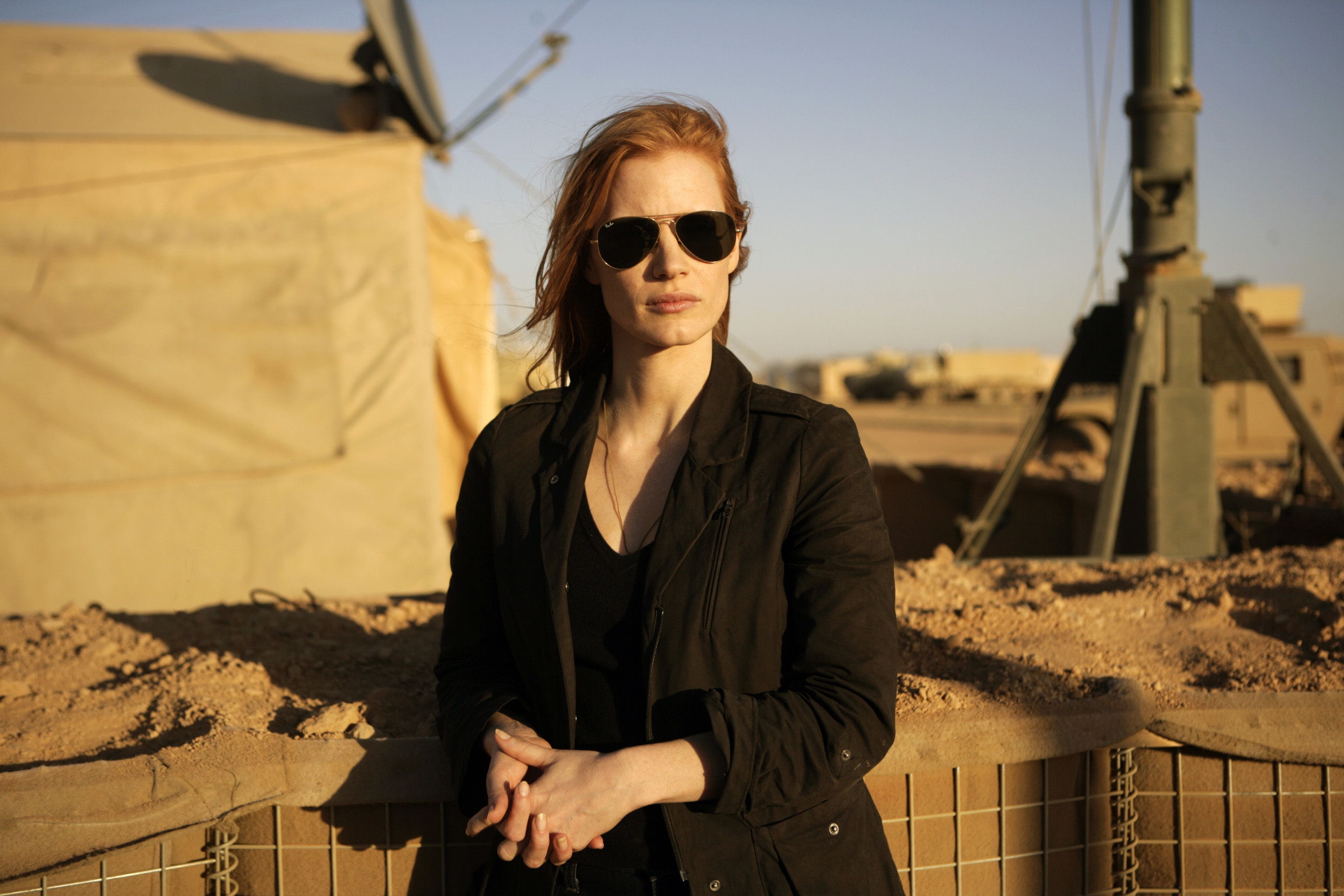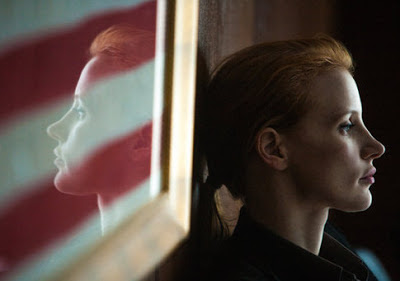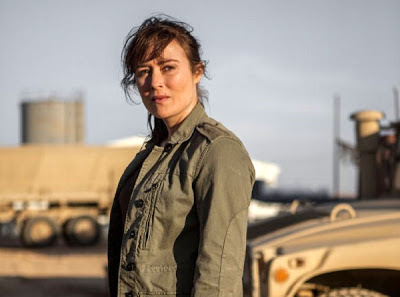 “This is tradecraft,” a CIA operative states at the rough midpoint of Zero Dark Thirty, Kathryn Bigelow’s riveting, exhausting account of the decade-long manhunt for Osama bin Laden. The statement is repeated shortly thereafter by another agency bureaucrat; in both cases, the speaker is explaining the elaborate countersurveillance tactics employed by bin Laden and his cohorts. Both agents are frustrated and worn down, exhibiting a bitterness brought on by years’ worth of sleepless searching that has thus far produced no tangible results. But there is also a sliver of admiration in their assessment of their enemy, a grudging acknowledgement that their quarry know how to do their job, and do it well.
“This is tradecraft,” a CIA operative states at the rough midpoint of Zero Dark Thirty, Kathryn Bigelow’s riveting, exhausting account of the decade-long manhunt for Osama bin Laden. The statement is repeated shortly thereafter by another agency bureaucrat; in both cases, the speaker is explaining the elaborate countersurveillance tactics employed by bin Laden and his cohorts. Both agents are frustrated and worn down, exhibiting a bitterness brought on by years’ worth of sleepless searching that has thus far produced no tangible results. But there is also a sliver of admiration in their assessment of their enemy, a grudging acknowledgement that their quarry know how to do their job, and do it well.
So does Bigelow. Zero Dark Thirty is many things – a gripping procedural, an ambiguous morality tale, a desperate quest for redemption – but above all it is a study of men and women enthralled in their work. And Bigelow, whose prior feature was the similarly magnetic (if entirely different) Hurt Locker, demonstrates a singular appreciation of the motivations of workers striving to accomplish their goals. Yes, her movie is about the successful assassination (or, depending on your point of view, unsanctioned murder) of one of the most formidable terrorists the world has ever known, but it is also about the far more personal journey toward vindication: the pure satisfaction derived from completing a designated task, no matter how monumental.
The primary assignee of that task is Maya (Jessica Chastain), whom we first meet as a relatively green CIA intelligence officer . After a black-screen opening in which 911 dispatchers attempt to console callers trapped inside the blazing World Trade Center – a chilling sequence that immediately communicates the movie’s stakes without even displaying a frame – Maya arrives in Pakistan just in time to witness the interrogation of a low-level Al Qaeda operative. The interrogator is named Dan (Jason Clarke), a physically imposing figure with a scraggly beard who later introduces himself to one prisoner as “bad fucking news”. He isn’t kidding. Within the movie’s first 15 minutes – with Maya looking on silently, her implacable face occasionally betraying flickers of fear – Dan has subjected his victim to a variety of horrific humiliations, including waterboarding, sleep deprivation, and other revolting techniques described in the field manual of “enhanced interrogation”.
By which, of course, I mean torture. As you may have heard, Zero Dark Thirty has courted quite a bit of controversy for its depiction of torture, with some decrying the film as a commendation of inhumane tactics and others skewering it as a condemnation of the Bush presidency. The central question in many viewers’ minds appears to be whether or not Bigelow actually supports the practices that she presents so baldly to the audience. It’s a question she answers with savvy, resounding silence. From a political standpoint, Bigelow and screenwriter Mark Boal (who also wrote the script for The Hurt Locker) appear to be making no statement at all. It’s highly ambiguous whether the torture featured in the film actually produces any actionable intelligence, an ambiguity Bigelow is only too happy to leave dangling. Either way, she’s simply documenting an uncontroverted truth: that torture happened, and that it was ugly.
More to the point, Bigelow depicts the interrogations in the least glamorous way possible, thereby defeating any charge of jingoism. The torture scenes are decidedly queasy and unpleasant, with the harsh interior lighting illuminating the blood trickling across the floor. Yet their most disturbing element is not one of image but of sound, namely the victim’s shrill screams, a disconsolate wail that Bigelow repeatedly underscores by cutting to Maya’s silent (but uncertain) reaction. Given this wretched display, to argue that the movie advocates for torture is to deliberately evade what appears on the screen.
And from a purely cinematic perspective – which, in my mind, should serve as the primary prism when evaluating Zero Dark Thirty on its merits – the torture scenes are effective, not just as a blunt acknowledgement of their existence but also as a framing device, illustrating Maya’s swift progression from squeamish spectator to hands-on facilitator. When questioning a suspect later in the movie, Maya regularly conveys commands to have him slapped, a punishment she looks upon with little to no emotion. Chastain – in one of many subtle gestures that combine to form a complete, committed performance – transforms her face, initially haunted and anxious, into a mask of steely resolve.
But this is not to suggest that the interrogators of Zero Dark Thirty are bad, remorseless people. Bigelow is too sensible to pass judgment like that, and besides, she’s too busy being fascinated by their everyday movements and activities. The movie’s middle third is comprised mostly of CIA agents talking, wading through papers and assimilating newfound intelligence. Boal’s script emphatically eschews hand-holding (Bigelow does supply a handful of title cards, the majority of which are more cryptic than explanatory), and while this lends the proceedings ample verisimilitude, the result is that the characters’ spook-speak – a parlance that invariably features unfamiliar idioms along with tossed-off abbreviations such as “KSM” and “ISI” – can be difficult to parse.
But what Boal sacrifices in clarity, Bigelow compensates for in atmosphere. She is not quite a master tactician, as her urgent, occasionally chaotic style lacks the refinement of compatriots such as Steven Spielberg or David Fincher. But she has a deep-seated understanding of the restless drive that animates her characters, and of how determination can deteriorate into obsession. And so, as agents pore over photographs and devour data, their potentially mundane actions are laced with an undercurrent of vital, invigorating significance.
Given that significance, it’s perhaps inevitable that Zero Dark Thirty is more about plot than character, but that doesn’t prevent Bigelow from individuating her players, thanks in large part to her crack cast. Maya could be considered a less frantic, more stable cousin to Carrie Mathison, the brilliant, bipolar CIA analyst on Showtime’s “Homeland”, and Chastain delivers a forceful performance that communicates both single-minded tenacity and its heartbreaking costs; the film’s final shot, in which Chastain holds the frame for near eternity, is devastating visual proof that you can never go home again. But the real stars are Jason Clarke and Jennifer Ehle. Clarke, whose complete absence on the litany of year-end award ballots is one of this Oscar season’s most mystifying omissions, offers a master class in modulation; his Dan alternates seamlessly from savage inquisitor to smooth-talking suit not because he’s erratic but because he’s simply a loyal public servant, doing his duty as his country requires. As one of Maya’s colleagues, Ehle maximizes her too-brief screen time, mingling Maya’s passion and zeal with her own sense of giddiness, an inimitable delight at doing a job well done.
Ehle’s character, Jessica, is the centerpiece of Zero Dark Thirty‘s most fully realized sequence, which takes place at Camp Chapman, a CIA base in Afghanistan. After methodically building tension via a number of in-office scenes, the suspense crests when Bigelow suddenly transports the action outdoors, where Jessica and a handful of operatives await the arrival of a potential informant. There are only a few elements in play here – a gate, a guard tower, a long and dusty road, a fateful decision of trust – but Bigelow stages the scene masterfully, drawing out the informant’s approach with a patience that mounts to such excruciating dread, it borders on sadism. It’s a sequence whose ultimate impact is, both literally and figuratively, shattering.
And then, of course, there is the Navy SEAL raid on bin Laden’s compound, a last-act tour de force that also embodies the spirit of the entire film. It’s a raid that will be discussed and analyzed for eons, yet Bigelow’s reenactment is entirely free of any sense of inflated self-importance or congratulatory rhetoric; even the historic kill shot is received only with the whispered words, “Potential jackpot”. Instead, she presents the action in a series of meticulous phases – a door must be breached here, a flight of stairs ascended there – that belie the overarching gravity of the moment. Aided by Greig Fraser’s eerie cinematography, which offers frequent glimpses through the SEALs’ night-vision goggles, Bigelow focuses completely on the soldiers, emphasizing their teamwork and skill (plus some snatches of their mordant humor). It’s a sequence that bears no indicia of a historic event, which, in a cinematic sense, is precisely why it’s historic.
Speaking of history, the legacy of Zero Dark Thirty has yet to be determined. Ultimately, its lasting reception may come down more to the preconceived expectations of its audience than the actual quality of the finished product. For my part, I choose to savor the movie itself. In a breathless two-and-a-half hours, Bigelow has expertly streamlined one of the most important events in recent history, but Zero Dark Thirty is no mere academic lesson. It’s an exhilarating, kinetic thriller that shows us how the fate of the world can be changed through something as reliable and sturdy as the careful, rigorous application of tradecraft. Jackpot.
Jeremy Beck is the editor-in-chief of MovieManifesto. He watches more movies and television than he probably should.



Beck! Really nice job- agree with you on all fronts. the beginning torture scenes were so… overwhelming. Question for you- do you remember when the top D.C. character sat down with Jessica Chastain at lunch? He said, do you know why we recruited you after high school? … and she responded, i dont think im allowed to talk about that. Do you know what that meant? Great blog post- keep em up! -R
Thanks Raashi, appreciate it. Regarding your question, I think it's left deliberately ambiguous. It's possible that there's actually some shady event in her past that has to remain confidential, but I'm more partial to the explanation that she's guarded and withdrawn by nature, and she reveals as little information about herself out of habit.
I'm glad you brought up that scene, though, because it features one of my favorite moments of the movie that I didn't have room to mention in my initial post, namely the bit when James Gandolfini asks Maya what else she's worked on besides bin Laden, and she flatly responds, "I've done nothing else". That quietly informs us about the depths of her obsession, and it serves to make the movie's final shot all the more powerful.
Glad you liked the movie much as I did! As far as the acronyms go, KSM is Khalid Sheik Mohammad (remember the hairy guy in the stretched out undershirt we captured awhile back? That's him). ISI is Pakistani Intelligence, similar to the CIA. I've read several books detailing various sections of the movie and would be happy to provide recommendations. Fabulous review Jeremy!
-Sarah
Thanks, Sarah! And thanks for clearing up the acronyms — your expertise is much appreciated.